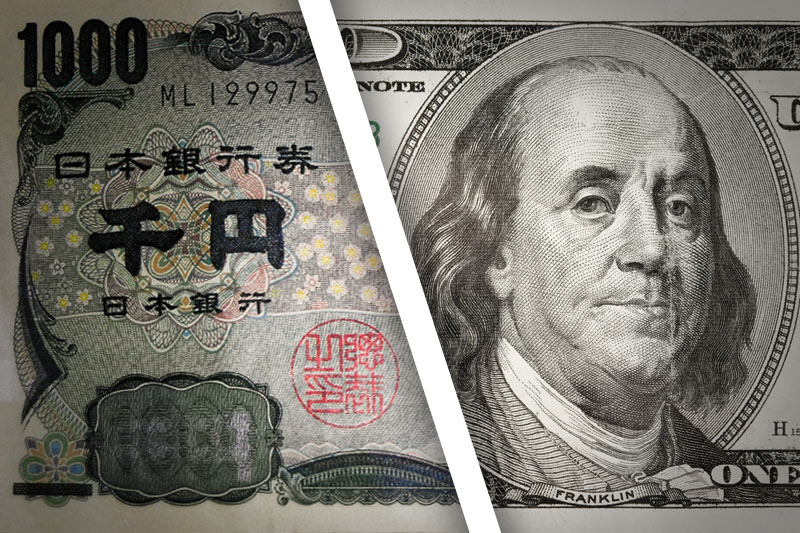Investing.com - The dollar firmed against the yen on Monday after U.S. factory data beat forecasts and cemented sentiments that the Federal Reserve remains on track to begin tapering stimulus programs in the coming months.
Stimulus tools such as the Fed's USD85 billion in monthly bond purchases aim to drive recovery by pushing down long-term interest rates, weakening the dollar in the process, though talk of their dismantling strengthens the currency.
Meanwhile, dovish comments out of the Bank of Japan weakened the yen against its advancing U.S. counterpart.
In U.S. trading on Monday, USD/JPY was trading at 103.09, up 0.62%, up from a session low of 102.23 and off a high of 103.13.
The pair was likely to find support at 102.23, the earlier low, and resistance at 103.73, the high from May 22.
The dollar saw support earlier after the Institute for Supply Management reported that U.S. manufacturing activity in November expanded at its fastest pace since April 2011, fueling optimism for more robust economic recovery down the road.
The ISM manufacturing purchasing managers’ index rose to 57.3 in November from 56.4 in October.
Analysts were expecting the index to fall to 55.0, and the surprise uptick sparked demand for the dollar.
The report said both production and new orders rose by around 3 points to 62.8 and 63.6, respectively, while the employment component of the index indicated some improvement in the labor market in November, rising by a little over 3 points to 56.5.
Meanwhile the yen came under pressure on market expectations for the Bank of Japan to beef up stimulus programs to meet its 2% inflation target by 2015.
Earlier Monday, BoJ Governor Haruhiko Kuroda pledged to counter any new downside risks to the bank’s inflation goal, saying the BoJ would act by "adjusting monetary policy without hesitation."
The yen was down against the pound and down against the euro, with GBP/JPY up 0.49% and trading at 168.57 and EUR/JPY trading up 0.26% at 139.57.
London-based Markit Economics reported earlier that the euro zone's manufacturing PMI rose to a two-year high of 51.6 in November from October's 51.5 reading, beating estimates for an unchanged figure, which strengthened the euro against the yen.
Stimulus tools such as the Fed's USD85 billion in monthly bond purchases aim to drive recovery by pushing down long-term interest rates, weakening the dollar in the process, though talk of their dismantling strengthens the currency.
Meanwhile, dovish comments out of the Bank of Japan weakened the yen against its advancing U.S. counterpart.
In U.S. trading on Monday, USD/JPY was trading at 103.09, up 0.62%, up from a session low of 102.23 and off a high of 103.13.
The pair was likely to find support at 102.23, the earlier low, and resistance at 103.73, the high from May 22.
The dollar saw support earlier after the Institute for Supply Management reported that U.S. manufacturing activity in November expanded at its fastest pace since April 2011, fueling optimism for more robust economic recovery down the road.
The ISM manufacturing purchasing managers’ index rose to 57.3 in November from 56.4 in October.
Analysts were expecting the index to fall to 55.0, and the surprise uptick sparked demand for the dollar.
The report said both production and new orders rose by around 3 points to 62.8 and 63.6, respectively, while the employment component of the index indicated some improvement in the labor market in November, rising by a little over 3 points to 56.5.
Meanwhile the yen came under pressure on market expectations for the Bank of Japan to beef up stimulus programs to meet its 2% inflation target by 2015.
Earlier Monday, BoJ Governor Haruhiko Kuroda pledged to counter any new downside risks to the bank’s inflation goal, saying the BoJ would act by "adjusting monetary policy without hesitation."
The yen was down against the pound and down against the euro, with GBP/JPY up 0.49% and trading at 168.57 and EUR/JPY trading up 0.26% at 139.57.
London-based Markit Economics reported earlier that the euro zone's manufacturing PMI rose to a two-year high of 51.6 in November from October's 51.5 reading, beating estimates for an unchanged figure, which strengthened the euro against the yen.
